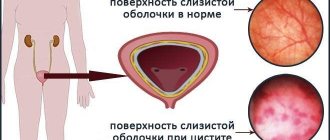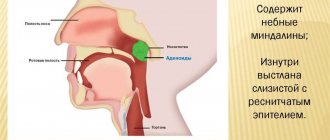Many girls suffering from pathology do not immediately understand how dangerous ovarian dysfunction can be. Many people think that a short delay in menstruation or their irregularity is due to the characteristics of the body, climate change or exposure to a stressful situation.
But the correct cycle has clear parameters:
- duration of critical days is 3-7 days;
- the interval between cycles is from 21 to 35 days;
- blood loss is no more than 100 ml.
It is very important to promptly detect the slightest deviations from the accepted norm, which may be the first symptoms of ovarian diseases.
If you do not start treatment in a timely manner, this is fraught not only with a shift in the cycle, but also with amenorrhea, as well as the inability to conceive a child.
Causes of ovarian dysfunction
The ovaries are female paired sex glands, in the structure of which follicles mature. These organs are part of the endocrine system and produce steroid hormones - estrogens, androgens and progestins. The normal functioning of the ovaries largely depends on the work of other organs of the endocrine system. Therefore, if a woman has any endocrine diseases (hypothyroidism, diabetes mellitus, pituitary adenoma, etc.), the likelihood of developing ovarian dysfunction increases.
What is ovarian dysfunction?
In addition to the endocrine-related causes of this pathology, the following prerequisites for the development of ovarian dysfunction are identified:
- Inflammatory processes in the uterus and its appendages.
- Congenital and acquired pathologies of ovarian development.
- Neoplasms in the organs of the reproductive system.
- Endometriosis.
- Abortion (especially during the first pregnancy).
- Curettage of the uterus caused by pathologies of the cervix, frozen pregnancy, spontaneous miscarriage.
- Incorrect position of the intrauterine device (IUD).
- Exhaustion of the body caused by psycho-emotional stress, excessive physical exertion, and insufficient nutrition.
- Irradiation.
During pregnancy
The question of whether it is possible to get pregnant with such a pathology interests many women. However, the doctor cannot immediately clearly answer the patient whether she will be able to get pregnant. It depends on the severity of the disease and the reasons that provoked it.
It is important that the process of preparing for pregnancy is controlled by a doctor, prescribing adequate therapy and monitoring the woman’s condition over time. If necessary, a course of treatment is carried out to restore ovulation.
If the doctor correctly approaches the determination of the treatment regimen, then modern methods of therapy help to get pregnant and carry the baby to term. It is important that from a very early stage the expectant mother is regularly examined by a specialist and advised on all issues. After all, women with such a pathology may experience critical periods throughout pregnancy, during which abdominal pain and discharge appear. Such symptoms should be reported to your doctor immediately.
If pregnancy does not occur even after treatment, it is advisable to consult a fertility specialist about the possibility of artificial insemination.
If a woman had a frozen pregnancy , after that she also needs medical supervision, since dysfunction after such a pregnancy can provoke very serious complications.
Types of ovarian dysfunction
Depending on the patient’s age and the functioning of her body’s systems, the following types of this pathology are distinguished:
- Hormonal ovarian dysfunction in women of the reproductive period. This form of the disease is caused by disturbances in the synthesis of hormones at the level of the central nervous system. The cause of the pathology may be a malfunction of the pituitary gland, hypothalamus, adrenal cortex, thyroid gland, or pancreas. A distinctive feature of this form of the disease is its prevalence among women of the reproductive period. The background of the disease is inflammatory.
- Ovarian dysfunction in adolescents (juvenile form) occurs in girls 11-15 years old. Since during puberty the menstrual cycle is in its infancy, its regularity and volume of discharge may differ slightly from the norm. Despite the fact that most often such deviations go away on their own, visiting a gynecologist and conducting the necessary examinations is still mandatory.
Expert opinion
With the development of ovarian dysfunction in early and middle puberty, there is a danger of the appearance of single and multiple cavity formations (cysts) on the body of the ovary. Such formations are often diagnosed late, thereby leading to the development of polycystic disease.
Obstetrician-gynecologist of the highest category Oksana Anatolyevna Gartleb
- Menopausal ovarian dysfunction is a natural cessation of the reproductive function of the female body and normally occurs between 45-55 years. It is caused by depletion of the follicular reserve, lack of ovulation and a general change in the woman’s hormonal levels.
- Inflammation. The presence of an inflammatory process in the uterus or appendages can cause disruption of the normal functioning of the ovaries. Inflammation can be caused by the penetration of pathogenic microorganisms through the vagina due to STDs, imbalance of the vaginal microflora, or failure to comply with the rules of intimate hygiene. Also, the spread of pathogenic agents is possible from other organs through the blood, lymph and cryptogenically.
General information
Ovarian dysfunction is a group of pathologies of the female reproductive system associated with a disorder of the hormonal function of the ovaries.
This pathology is a consequence of an inflammatory process or endocrine disorders. With the development of this condition, ovulatory and menstrual functions are disrupted. In this case, the monthly cycle lengthens and lasts more than 35 days, or is too short - up to 21 days. Dysfunctional uterine bleeding lasting more than seven days or erratic menstruation also develops. This condition leads to the development of diseases of the genital area, as well as infertility .
Symptoms and signs
Ovarian dysfunction, treatment
The main symptom of ovarian dysfunction is menstrual irregularity, represented by dysfunctional uterine bleeding (DUB) or amenorrhea. The interval between menstruation may be more than 35 days or less than 21 days, the duration of discharge may be more than 7 days or less than 5 days.
Deviation from the norm in the volume of discharge (100-150 ml) can also be a sign of ovarian dysfunction. Too heavy or scanty periods should alert a woman and cause her to make an appointment with a gynecologist.
In addition to the symptoms described above, the following signs may indicate the presence of ovarian dysfunction in a woman:
- Unpleasant sensations in the side and lower abdomen during menstruation and during the period of expected ovulation.
- Pronounced premenstrual syndrome.
- Difficulty conceiving and bearing a child.
- Long-term absence of menstruation (more than six months).
Indirect signs can also be identified:
- Sudden jumps in blood pressure.
- Problem skin and hair.
- Having excess weight.
Relationship between the disease and the menstrual cycle
Violation of the functionality of the appendages negatively affects the course of the menstrual cycle. The latter becomes irregular or completely absent. This occurs under the influence of the following factors accompanying the course of the disease:
- disruption of hormone production - lengthens or shortens the menstrual cycle, stops the growth of the endometrium of the uterus, which complicates the implantation of the fertilized egg into it;
- lack of ovulation, i.e. release of the egg from the follicle for further conception - prevents the onset of the second phase of the cycle and subsequent menstruation, which leads to an increase in the duration of the cycle and the appearance of cystic formations;
- insufficient production of progesterone - conception does not occur due to the inability of the fertilized egg to attach to the walls of the uterus.
Normally, the menstrual cycle lasts 25-35 days. If a woman's ovaries do not work properly, its duration can vary from 20 days to several months.
What does ovarian dysfunction lead to?
Some women who encounter ovarian dysfunction for the first time have little understanding of it, and therefore take the diagnosis lightly. However, if left untreated, this pathology can lead to the following diseases:
- Endometriosis.
- Uterine fibroids.
- Mastopathy
In addition, lack of treatment can lead to reproductive dysfunction. They can also provoke the development of hormonal-dependent forms of endometrial, ovarian and breast cancer.
Etiology
The etiological factors of ovarian dysfunction are:
- acute and chronic diseases of the reproductive system of an inflammatory nature;
- pathologies of the hypothalamus, pituitary gland, thyroid gland and other endocrine glands;
- frequent abortions;
- spontaneous abortions;
- benign ovarian tumors, cysts, malignant processes;
- frequent or constant excessive psycho-emotional stress;
- sudden climate change;
- taking pharmacological agents.
That is, dysfunction is a manifestation or consequence of other, more serious ovarian diseases. In this regard, the gynecologist prescribes treatment for ovarian dysfunction only after the woman has undergone a comprehensive examination and the cause of the disease has been eliminated.
Ovarian dysfunction and pregnancy
Since this disease involves disturbances in the process of follicle maturation and the possible absence of ovulation, conception and normal bearing of a child becomes problematic. However, this does not mean that a woman diagnosed with ovarian dysfunction will never be able to have children. With early detection of pathology and appropriate therapy, the chances of conception and normal pregnancy increase.
The patient must understand that treatment for ovarian dysfunction usually takes a long time.
The first attempts to become pregnant are made no earlier than 6 months after the start (or even later) after consultation with a gynecologist and endocrinologist. In addition, at the stage of pregnancy planning, it is necessary to take a blood test to check hormone levels and undergo all the necessary tests. Such preparation will reduce the likelihood of complications during the first, most difficult, weeks of pregnancy.
To eliminate ovarian dysfunction, expectant mothers are prescribed drugs that stimulate ovulation, which must be taken for several months. In this case, ultrasound of the ovaries can be periodically performed to monitor the degree of maturation of the follicles.
Diet
Diet for polycystic ovary syndrome
- Efficacy: therapeutic effect after 3 weeks
- Timing: constantly
- Cost of products: 1400-1500 rubles per week
Diet for ovarian cysts
- Efficacy: therapeutic effect after 3 weeks
- Timing: constantly
- Cost of products: 1500-1600 rubles per week
Proper nutrition is very important for the full functioning of a woman’s reproductive system. In order to prevent the development of ovarian dysfunction, it is important to consume those foods that will provide the woman’s body with important vitamins - A, B, C, E, as well as equally important microelements - copper, iron. Therefore, those who often practice mono-diets and fasting risk seriously harming the body as a whole and the reproductive system in particular.
It is important to include the following foods in your diet that are beneficial for the female reproductive system:
- Protein foods – if the body does not receive enough protein, the production of female sex hormones may be disrupted.
- cream , liver are sources of vitamin A.
- Sea buckthorn, rowan, carotene, pumpkin are sources of carotene, which is involved in the body in the formation of vitamin A.
- Black bread, bran, brewer's yeast will provide the body with B vitamins.
- Rose hips, currants, citrus fruits, onions, sauerkraut are sources of vitamin C.
- and green salad are sources of vitamin E.
- Nuts, dried fruits, beans, pomegranates contain iron.
- Seafood saturates the body with copper and has a positive effect on metabolic processes.
- Peanuts, oats, milk - contain argenine. This amino acid is very important for the ovaries.
Diagnostics
Since an unstable menstrual cycle can be a symptom of various pathologies, a thorough examination should be carried out before making a diagnosis and starting therapy. Until then, ovarian dysfunction will be unspecified, so it is recommended to undergo the following studies:
- Ultrasound of the pelvic organs, thyroid gland.
- Conducting bacterial culture of vaginal secretions to identify possible infections and examination for STIs.
- Hysteroscopy of the uterus is a minimally invasive examination of the uterine cavity using a special optical device. During hysteroscopy for ovarian dysfunction, a biopsy can be additionally performed for further examination of the biomaterial in the laboratory.
- Blood test for the level of sex hormones and thyroid hormones.
- MRI of the pituitary gland. These studies are recommended when diagnosing ovarian dysfunction to exclude organic lesions of the pituitary gland, the work of which directly affects the hormonal balance of a woman.
Classification
Since the term “ovarian dysfunction” is a collective concept, it includes the following conditions:
- hyperfunction;
- ovarian hypofunction;
- too active production of female sex hormones;
- too active production of androgens ;
- polycystic ovary syndrome;
- primary failure;
- unspecified dysfunction.
There is also a classification according to the patient’s age:
- juvenile – develops in adolescents immediately after the first menstruation;
- reproductive - develops in patients of reproductive age;
- menopause – diagnosed in the period before menopause and directly during menopause.
Treatment of the disease
Ovarian dysfunction, treatment, drugs
Therapy for ovarian dysfunction is carried out under the supervision of a gynecologist and endocrinologist. Treatment should be aimed at stabilizing the patient’s hormonal levels and normalizing menstrual function. To treat ovarian dysfunction, a woman is prescribed oral contraceptives or taking estrogen and progesterone according to the phases of the menstrual cycle, stimulating ovulation. The dosage is determined individually depending on the results of blood tests for hormone levels. It should be borne in mind that hormonal therapy for ovarian dysfunction should be prescribed exclusively by a doctor.
To accelerate the restoration of ovarian function, vitamin and mineral complexes (in particular, vitamins E, C, folates) in a cyclic mode, physiotherapeutic procedures (ultrasound therapy, paraffin therapy, mud therapy), acupuncture and hirudotherapy can be recommended.
In addition, in case of ovarian dysfunction, the patient is recommended to normalize her work and rest schedule, eat well, sleep at least 8 hours a day, spend time in the fresh air, and engage in physical therapy.
Sometimes, with ovarian dysfunction, a woman may develop DUB (dysfunctional uterine bleeding). In this case, treatment begins with its relief. If the bleeding intensity is moderate or small, hemostatic drugs, anti-inflammatory therapy, and herbal medicines may be recommended to stop it. In the presence of intense DUB (which is quite rare), it may be necessary to stop it using surgical methods - for example, by curettage of the uterus followed by histological examination of its contents or “hormonal curettage”.
Expert opinion
DUB is a condition that is potentially dangerous not only for reproductive health, but sometimes even for the life of the patient. Therefore, if DMB of any intensity occurs, it is necessary to promptly seek medical help.
Obstetrician-gynecologist of the highest category Oksana Anatolyevna Gartleb
An important role in the treatment of ovarian dysfunction is given to eliminating the prerequisites for the development of pathology. If the cause of ovarian dysfunction is caused by an inflammatory process, antibiotics or anti-inflammatory drugs are prescribed (the choice of medication category depends on the type of pathogenic microflora). Hormonal imbalances, which are caused by disruption of the pituitary gland, hypothalamus, thyroid or pancreas, are treated with appropriate hormonal agents, since this pathology is quite serious and can lead to the development of a number of complications (including infertility), self-medication using “grandmother’s” methods is extremely Not recommended.
Pathogenesis
The regulation of ovarian function is determined by the hormones of the anterior pituitary gland : luteinizing hormone, follicle-stimulating hormone, prolactin . If at a certain stage of a woman’s monthly cycle the ratio of these hormones is correct, the ovarian cycle is not disrupted and ovulation occurs on time. Ovarian dysfunction occurs when regulation by the hypothalamic-pituitary system is disrupted, resulting in anovulation.
The absence of the corpus luteum phase and ovulation leads to the manifestation of a variety of menstrual cycle disorders associated with a lack of progesterone and excessive amounts of estrogen .
Prevention
- Undergo routine gynecological examination in a timely manner. This will help to timely identify the presence of inflammatory diseases of the reproductive system.
- If you have endocrine disorders, you must adhere to the treatment prescribed by your endocrinologist.
- It is advisable to reduce stressful situations, rest more, devote time to hobbies, get enough sleep and eat a balanced diet.
- To protect against possible ovarian dysfunction, it is recommended to avoid prolonged exposure to direct sunlight and in areas of high radiation.
- Clear selection of contraceptive methods.
- Since artificial termination of pregnancy can provoke the development of ovarian dysfunction, a woman should soberly assess the possible consequences. This is especially important if she plans to have a child in the future.
Also, in order to normalize the menstrual cycle, you can take Evening Primrose Oil “Gynocomfort”. It is an additional source of essential Omega-6 polyunsaturated fatty acids. Taking evening primrose oil has a beneficial effect on the synthesis of prostaglandins, helps eliminate inflammatory processes in the pelvic organs, blocks the production of prolactin, has a positive effect on the immune system and protects cells from free radicals. Dietary supplement Evening primrose oil "Ginocomfort" is not a medicine, it has the necessary documents and quality certificates.
is not responsible for the accuracy of the information presented in this video clip.
Source - About the most important things Sources:
- STANDARD OF PRIMARY HEALTH CARE FOR OVARIAN DYSFUNCTION. // Reproductive health of children and adolescents. – 2014. – No. 5. – P. 72-77.
- OPTIMIZATION OF TREATMENT OF OVARIAN RETENTION FORMATIONS IN GIRLS WITH OVARIAN DYSFUNCTION OF CENTRAL GENESIS. Moskaleva A.Yu., Kirgizova O.Yu. // Acta Biomedica Scientifica. – 2011. – No. 1 (77). – pp. 98-99.
- Some aspects of the etiology of ovarian cysts. Dubrovina S.O. // Ross. Vestn. obstetrician-gynecologist. – 2004. – No. 6. – P. 9–11.
- New approaches to the diagnosis and treatment of ovarian retention cysts and the possibility of restoring reproductive function. Nikolaeva I.N. // Author's abstract. dis. Ph.D. honey. Sci. 14.00.01 – Blagoveshchensk. - 2006. – P. 24.
- Conservative treatment of follicular ovarian cysts. Kotrikadze K.A., Sabakhtarashvili M.A., Gvenetadze A.M. // Georg. Med. News. – 2002. – N 3. – P. 40–42.
- https://euromed-invitro.ru/patients/infertility/female-infertility/ovarian_dysfunction/
- https://medicalj-center.info/diseases/ovarian-dysfunction-causes-symptoms-and-treatment.html
- https://emedicine.medscape.com/article/271046-overview
- https://www.symptoma.com/en/ddx/ovarian-dysfunction
- https://www.dovemed.com/diseases-conditions/ovarian-hypofunction/
Answers
Since ovarian dysfunction is not an independent disease, but a signal of dysfunction in a woman’s body, it is necessary to find the root cause of the problem and get rid of it.
Is ovarian dysfunction treatable?
Undoubtedly, the condition is treatable. Basically, girls undergo a course of therapeutic activities at a day hospital. If the process is mild, therapy at home is possible. Treatment tactics for ovarian dysfunction should be aimed at normalizing menstruation and the full functioning of the woman’s body.
Is it possible to cure dysfunction without hormones?
The answer is yes. But the severity of the disease and the characteristics of its course, as well as the resistance of the girl’s immune system, are important.
If chronic inflammation has led to the development of ovarian dysfunction, you can get rid of it by douching. It is also possible to take homeopathy and traditional medicine. The main thing is that treatment is carried out in a timely and comprehensive manner.
But, if the pathology is caused by an imbalance in hormone levels, it can be cured only after undergoing a course of hormone therapy, which is aimed at normalizing the hormonal balance in the female body.
Is it possible to get pregnant with ovarian dysfunction?
This question worries many girls who have been diagnosed with ovarian pathology. Do not lose heart ahead of time, because pregnancy can occur with ovarian dysfunction.
In order for the egg to be fertilized and it becomes possible to bear a healthy baby, a course of treatment will be required to normalize the cyclicity of menstruation.
More often, after a properly selected course of treatment, the female body only needs six months to fully resume its functionality, establish the cyclicity of menstruation and complete ovulation on schedule.
How to induce menstruation with ovarian dysfunction
To induce the onset of menstruation, gynecologists prescribe products with a high content of progesterone, for example Utrozhestan, Duphaston, etc. After taking them, menstruation occurs 6-8 days later.
If the onset of menstruation is necessary for conception, then the use of medications that stimulate the onset of ovulation is also required. Such drugs are Profazi, Humegon, Clomiphene, etc. You need to stimulate ovulation for at least 3 menstrual cycles, after which you should not stop taking progesterone.
Is it possible to have sex
Sex is a pleasant activity that has a beneficial effect on the body of both participants. Therefore, even with ovarian dysfunction, a woman should not deny herself pleasure.
An exception is the situation when a girl has progressive inflammation in her genitals, as well as when uterine bleeding develops. If there are no contraindications or pain during intimacy, enjoy producing oxytocin and endorphin!
Popular questions
I have inflammation of my left ovary.
The doctor prescribed me several injections and suppositories. Can I replace injections with tablets? I recommend that you consult your doctor regarding this issue to select adequate therapy and change the method of administration.
Good afternoon, polycystic ovary syndrome, the thyroid gland is normal, thyroid hormones too, hormones on days 2-4 of the cycle (it seems only DHEA-SO4 is increased): DHEA-SO4 354.8,
E2 28,
HFSH 2.46, HLH 2.19, PRL 10.99, TESTO 1.25, PROG 0.30, 25-OH 69.87, FT3 2.63, FT4 1.16, T3 1.65, T4 7.59,
TSH 1.790,
TP0AB 8.10, HSBG 28.6 26 years old, normal weight, I had my first menstruation at the age of 16 and came once every six months; I don’t plan to have children.
What treatment can you recommend? If, according to the result of ultrasound, there are more than 10 follicles in the ovaries and the volume is increased by more than 8.5 cm3, then it is recommended to take combined oral contraceptives. Considering the results of hormone levels, I would recommend taking a combination of ethinyl estradiol and cyproterone for at least 6 months.
How to treat an ovarian luteal cyst, if I’m pregnant, what should I do?
Hello! During pregnancy up to 16 weeks, such cysts require only dynamic monitoring and ultrasound control once a month.
Hello! For inflammation, can Reosorbylkat 200 be instilled?
Hello!
This drug is used only as prescribed by a doctor for severe, life-threatening conditions. For an accurate diagnosis, contact a specialist
Stages of the disease
Depending on the symptoms that appear, the pathology can be divided into several stages:
- The first is characterized by slight fluctuations in the menstrual cycle, accompanied by a reduction or increase in the duration of bleeding and an unpleasant increase in PMS symptoms.
- In the second, the disease progresses, causing severe pain during menstruation, as well as dysfunctional vaginal bleeding that appears in the middle of the cycle.
- Thirds are characterized by the absence of menstruation in reproductive age for more than 6 months, accompanied by a strong increase in the amount of estrogen and a complete cessation of ovulation.
Without timely treatment, a disease that has reached stage 3 can begin to progress, causing the development of serious gynecological and endocrine pathologies, as well as causing the appearance of estrogen-dependent oncology and infertility.











